Crest Hat Item Number: E20784-0 from the National Museum of Natural History

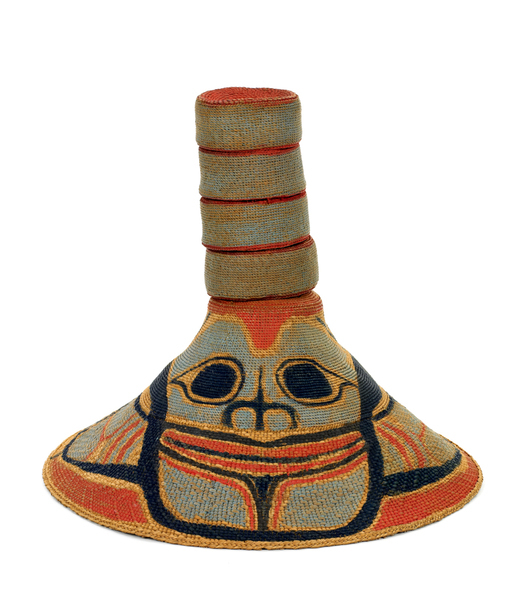
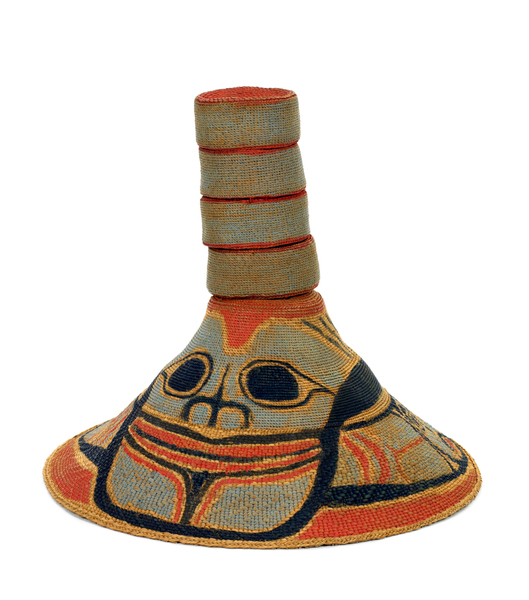
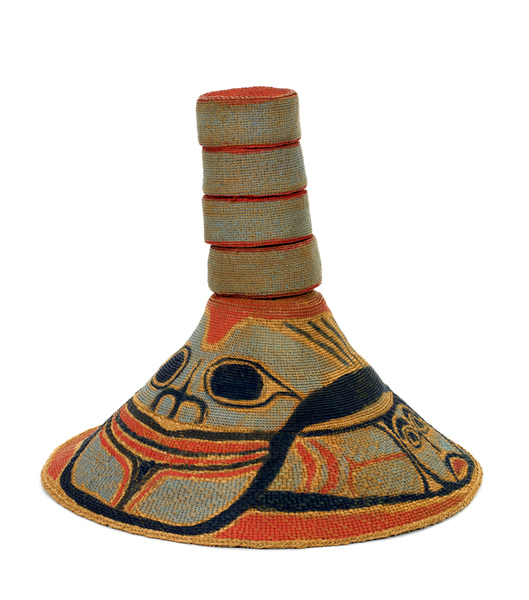
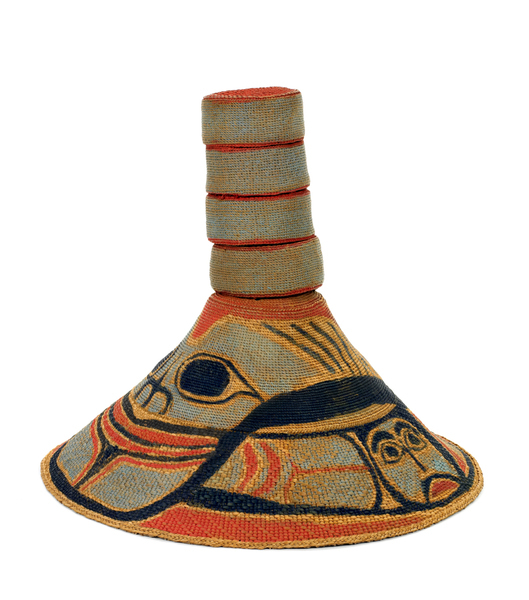
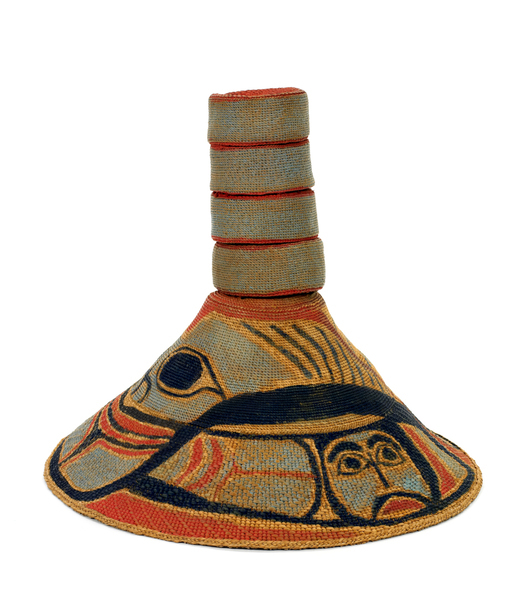

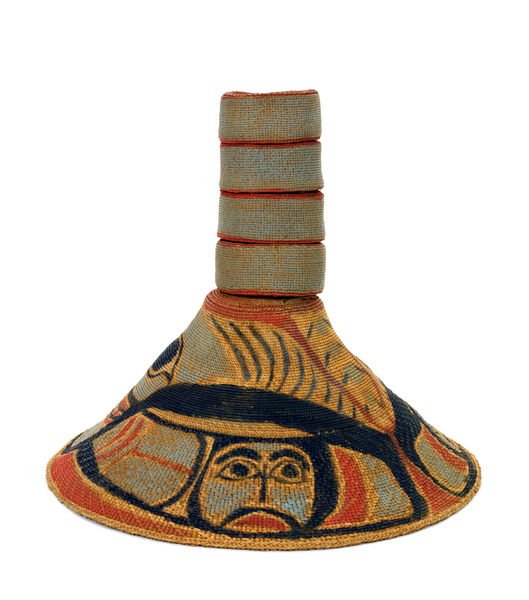
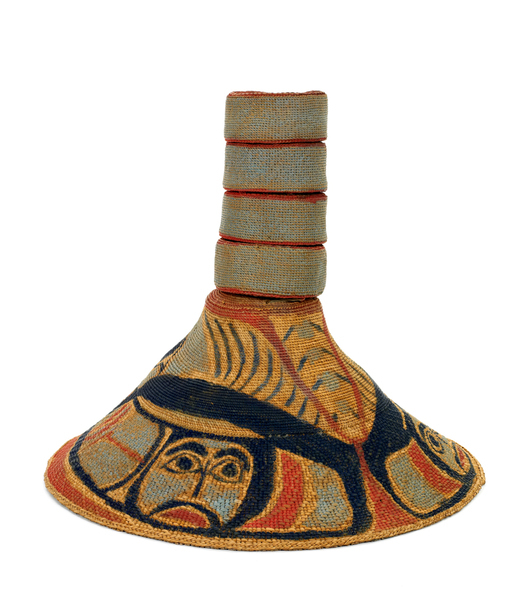
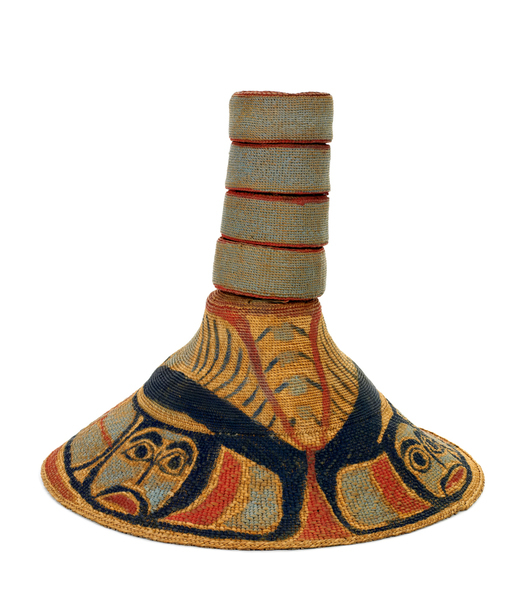
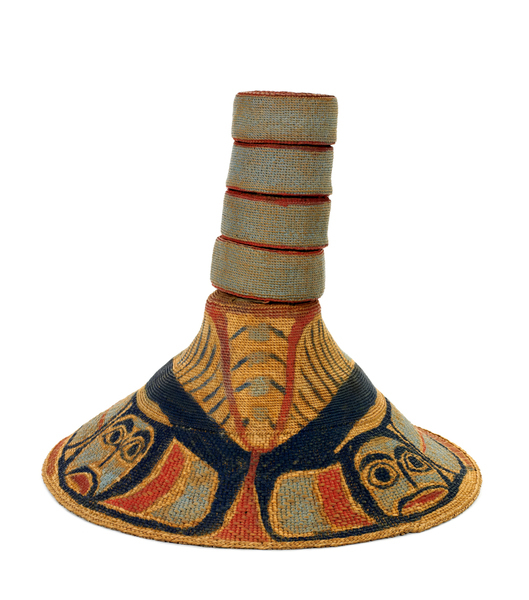

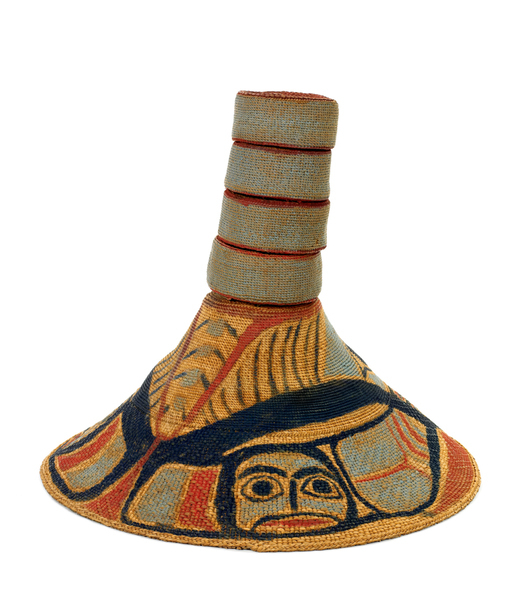
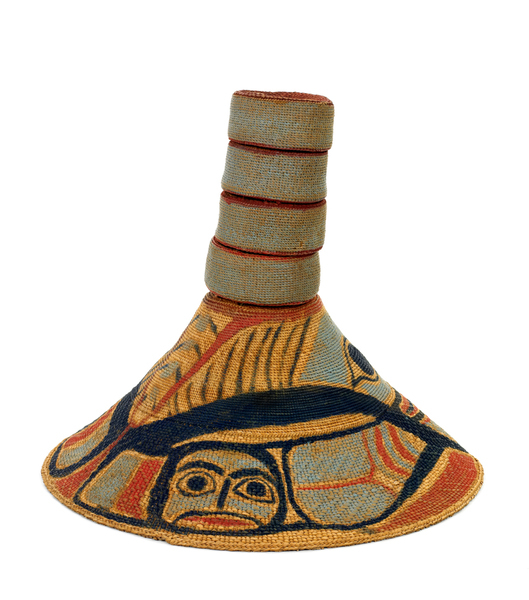
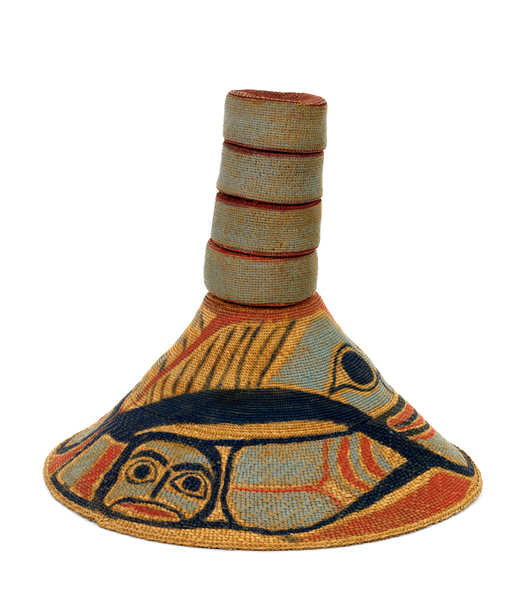

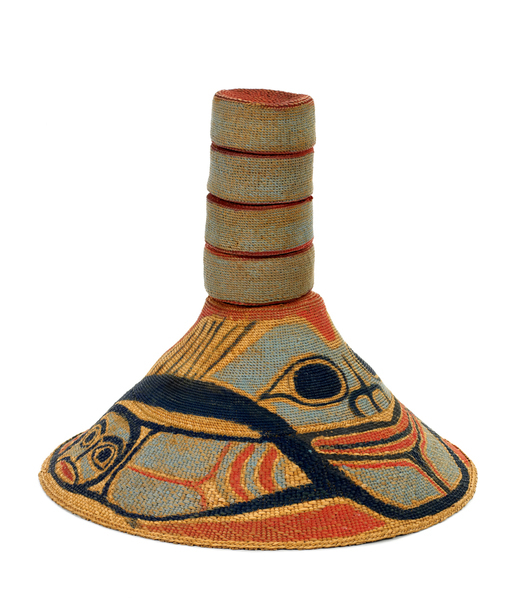
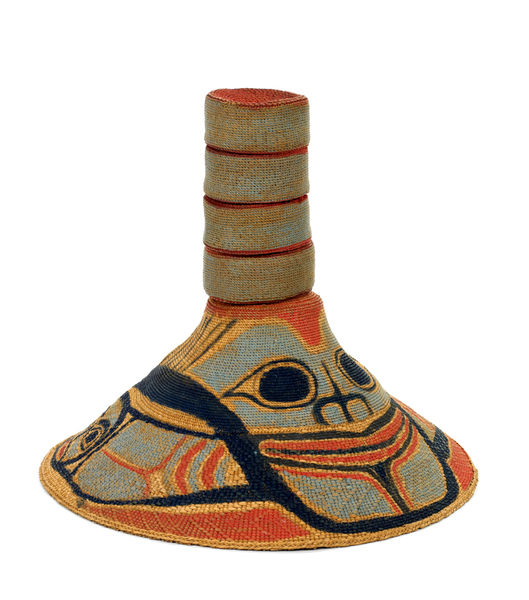
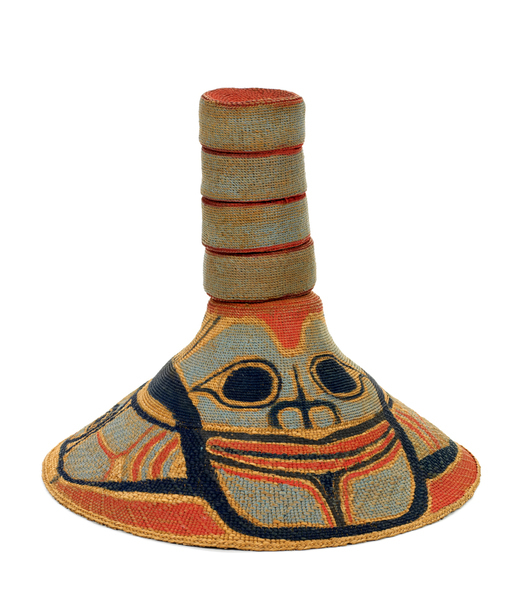
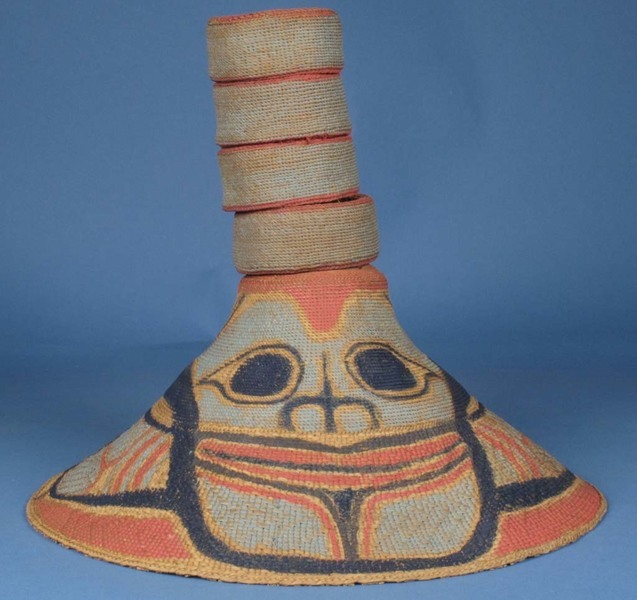
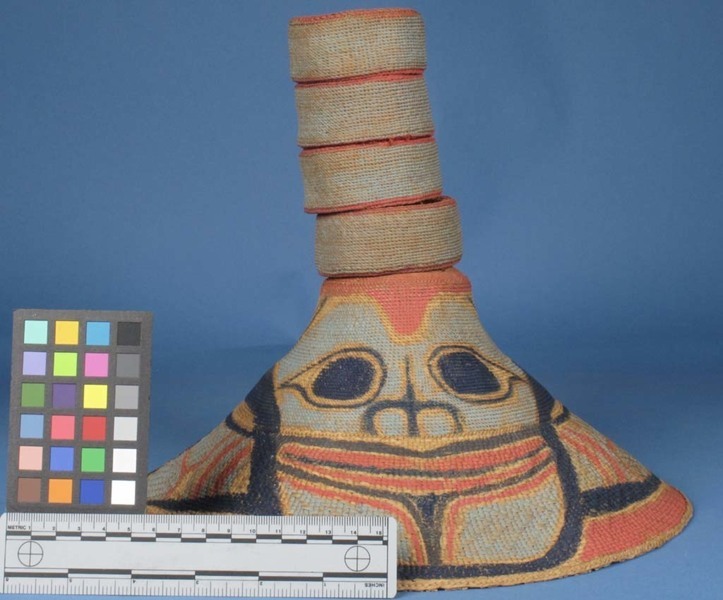
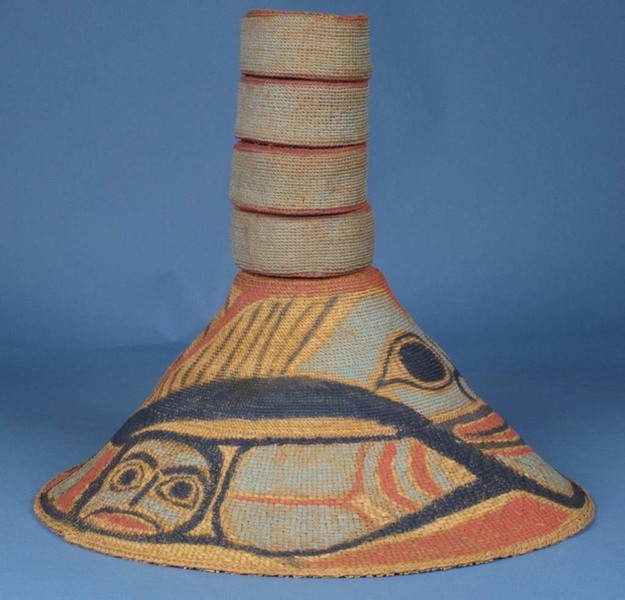
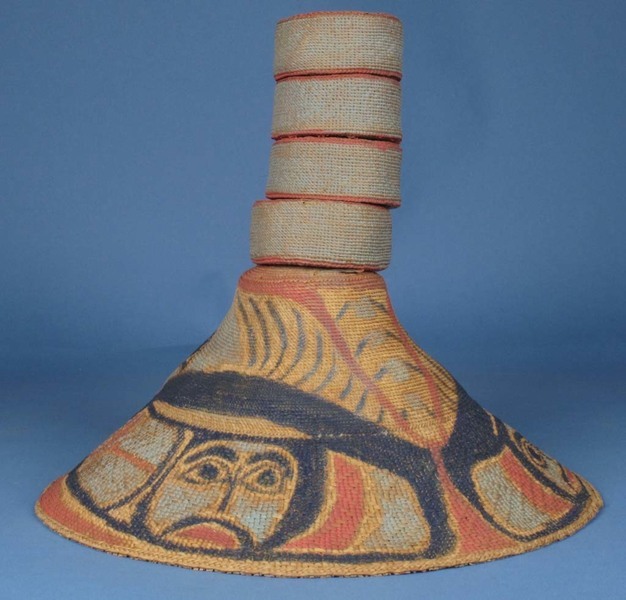
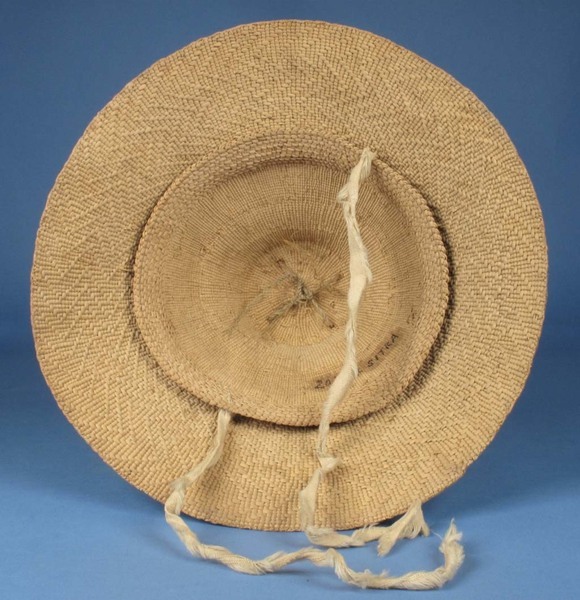


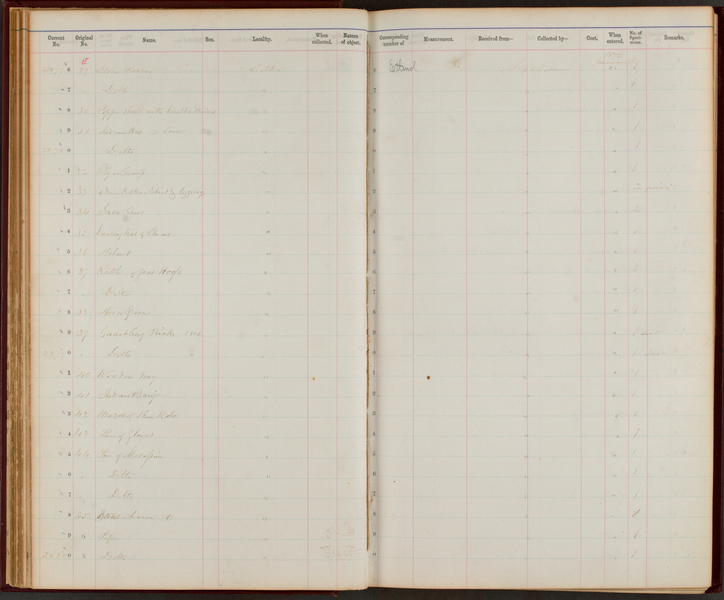
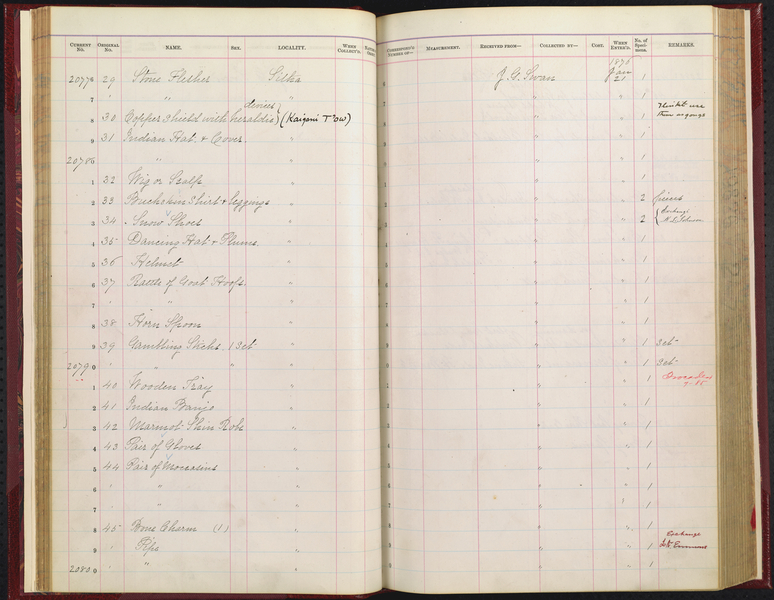
Notes
This woven spruce? root basketry hat painted with crest designs was originally catalogued/identified as "Dancing Hat and Plumes." Hat has a column of 4 hat rings (sometimes called potlatch rings) on top. It was on exhibit in NMNH Exhibit Hall 9, case 29, from 1957-2004; the exhibit caption read "Chief's dance hat, Tlingit."Source of the information below: Smithsonian Arctic Studies Center Alaska Native Collections: Sharing Knowledge website, by Aron Crowell, entry on this artifact http://alaska.si.edu/record.asp?id=47 , retrieved 2-14-2022: Crest hat, Tlingit. Information below is from discussions and the Smithsonian spotlight public talk with Teri Rofkar and Shelly Laws hosted by the Arctic Studies Center at the Anchorage museum on 11/23/2011. Also participating: Aron Crowell. Teri Rofkar: On the inside was the headband that holds it firmly on your head while you're dancing. That head band joins right here [the small ridge in middle of hat]. So, what happens is you're weaving along you're always having to add more warps ... hundreds and hundreds of them. So, if you're adding every other one and you've got like three hundred of them, you know that you have one hundred fifty of them to add. So we can count on the headband, if you look in there the weaving is much bigger then what you see here [on the outside]. And what they did was they wove it and the warps in this headband that's only about, maybe an inch long under there and they wove it and it had long warps on it so when they put it in [on the inside of the hat] those warps become the edge. And many times this [edge band] is a four strand braid. So, this [middle] is all three strand weaving, so you've got three weft elements ... it gives it that really smooth beautiful texture to paint on. And then the headband, and I switch to this skip-stitch, all rough like the skin on the back of a frog . . . Aron Crowell: And that same switch of pattern you also see on the Sugpiaq hats? Teri Rofkar: Yes, yeah there's gotta be some relations there. And you know the spruce has only been up this way, not that long.Ruth Demmert, Alan, Zuboff, and Linda Wynne made the following comments during the Tlingit Recovering Voices Community Research Visit, March 13-March 24, 2017. This hat is made of spruce root, not grass, and features a frog design which can be told because of the lips. The rings on the top of this object are very tight, and few people today can make them that tight. Alan comments that, in Angoon in particular, each ring represents a huge potlatch that involved many people. For Angoon they do not allow for more than three rings because the housemaster should not focus on his personal successes but should focus on the people, so they stop him from making a really tall hat. To add a ring, someone would commission someone from an opposite clan to make it and add it.
Item History
- Made in Sitka, Baranof Island, Alaska, USA
- Collected by James G. Swan in Sitka, Baranof Island, Alaska, USA during 1875
- Received during 1876
What
- Name
- Crest Hat
- Identification Number
- E20784-0
- Type of Item
- hat
Who
- Culture
- Tlingit
- Field Collector
- James G. Swan
Where
- Holding Institution
- National Museum of Natural History
- Made in
- Sitka, Baranof Island, Alaska, USA
- Collected in
- Sitka, Baranof Island, Alaska, USA
When
- Collection Date
- during 1875
- Acquisition Date
- during 1876
Other
- Accession Number
- 004730